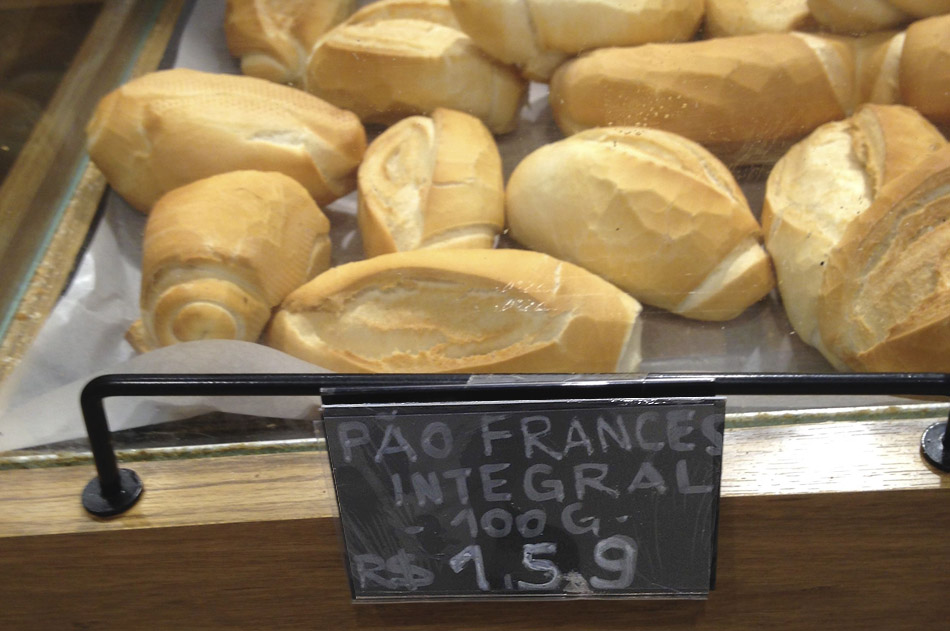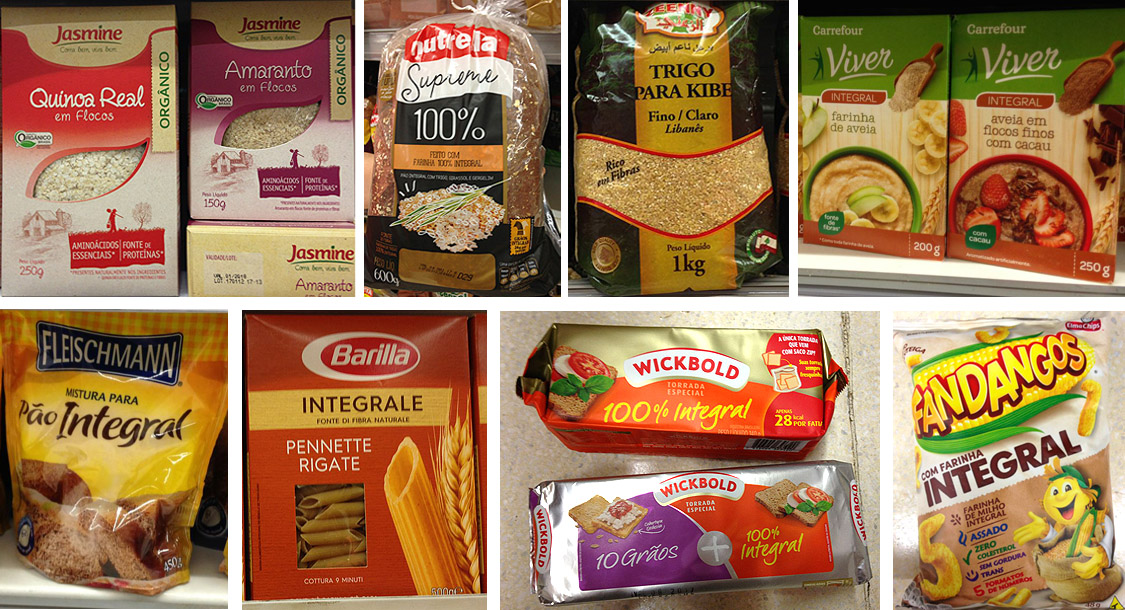Share This
Would you consider that bread above to be whole grain? Me neither. Yet the sign in the Brazilian supermarket selling it says “Whole Grain French Bread.” Nearby, in the frozen foods aisle, we spotted a “whole grain” pizza, whose dough ingredients included enriched flour, water, soybean oil, wheat bran, sunflower seeds, flax seeds, soy, wheat germ… and way down the list “oat flakes” that could possibly be whole grain.
Examples like these – and we found plenty more – illustrate why the Brazilian Health Regulatory Agency (ANVISA) is looking into ways to regulate whole grain labeling. To provide ANVISA with context for their deliberations, ABIA (the Brazilian food manufacturers’ association), ABIMAPI (the Brazilian pasta organization) and ABITRIGO (the country’s wheat milling association) jointly organized a two-day workshop in Brasilia – and invited me to share the experience of the Whole Grains Council.
Here are four key take-away messages that resonated with the 100+ people at the workshop – including ANVISA staffers and manufacturers:
- Whole Grains Don’t Include Soy, Flax, Bran, etc. Starting with the basics, speakers made clear that regulators around the world only include cereal grains (and often three pseudocereals: amaranth, buckwheat and quinoa) under the whole grain banner. Check out our list if you’re not sure.
- Losing a Little Bran may be Okay. The U.S. uses a rigid definition of whole grain, mandating that 100% of the grain kernel’s original bran, germ, and endosperm must be present in their original proportions in order for an ingredient to count as whole grain. Many speakers at the Workshop – including myself – recommended instead the whole grain definition from Europe’s HealthGrain Forum, which allows for up to 2% of a grain’s outer layers to be removed. These layers are where any potential unhealthy mycotoxins and pesticides are most likely to be found – and they’re also the bran layers with the fewest nutrients. With today’s sophisticated milling technologies capable of targeted, controlled peeling of grains, this “remove up to 2%” approach is believed by many to offer the best balance of health and safety.
- Partially Whole Grain Foods Can Contribute to Health. While 100% whole grain foods are great, it’s important not to let the perfect be the enemy of the good. Alicia de Francisco, PhD, a professor of grain science, cited studies that show huge health gains when people move from the lowest quintile of whole grain consumption to the next-lowest. While health benefits continue to increase with more whole grain consumption, the curve levels out considerably. Moving everyone just one step up the ladder is an important start. A labeling system (like the Whole Grain Stamp) that clearly identifies foods with different levels of whole grain content can help both consumers and manufacturers easily get started on the road to healthier grains.
- Consumers in Brazil Have a Lot in Common with Consumers Worldwide. Wherever I travel, I often hear that “consumers in other countries may like whole grains, but here in [insert name of country], we’re really used to refined grains and we just can’t change.” We all prefer the foods we’re used to, and most people in most countries are used to refined grains. It often takes time for our palates to adjust to the nuttier, fuller taste of whole grains. But as Bruna Tedesco, Marketing Director for Grupo Bimbo Brazil, pointed out, Brazilians are following world trends in moving toward whole grains not just for health but because they want more flavor too – “an explosion of pleasure and taste.” She said, “Ser integral é criterio básico” – to be whole grain is a basic criterion in today’s Brazilian market.
Despite the fact that understanding of whole grains is still in its early stages for many Brazilians, we also found some great whole grain products at the same supermarket where the “whole grain” French bread and pizza were being sold, as the collage below shows. Clockwise, from upper left: Quinoa Flakes and Amaranth Flakes; 100% Whole Grain Bread (WGC member Bimbo); Bulgur aka “wheat for kibbeh”; oat cereal, plain or with chocolate; whole grain corn snacks (WGC member Frito); 100% Whole Grain Bread (WGC member Wickbold); Whole Grain Pasta (WGC member Barilla); and Whole Grain Bread Mix (WGC member ACH/Fleischmann). In fact, 306 products have been approved to use the Whole Grain Stamp in Brazil.
I had some great discussions, made wonderful new friends, and enjoyed delicious Brazilian food (including quinoa chickpea salad and a great bulgur tabbouleh at a Fogo de Chão restaurant). ANVISA – the Brazilian equivalent of the U.S. FDA – is now considering text for potential regulations, which they expect to have ready for public comment by the end of the year. I hope that this workshop lays a good foundation for clear and reasonable whole grain labeling laws in Brazil. (Cynthia)



Comments
Add a Comment